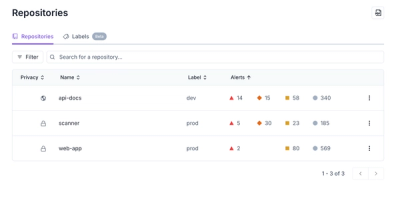
Security News
VulnCon 2025: NVD Scraps Industry Consortium Plan, Raising Questions About Reform
At VulnCon 2025, NIST scrapped its NVD consortium plans, admitted it can't keep up with CVEs, and outlined automation efforts amid a mounting backlog.
Reno is a release notes manager designed with high throughput in mind, supporting fast distributed development teams without introducing additional development processes. Our goal is to encourage detailed and accurate release notes for every release.
Reno uses git to store its data, along side the code being described. This means release notes can be written when the code changes are fresh, so no details are forgotten. It also means that release notes can go through the same review process used for managing code and other documentation changes.
Reno stores each release note in a separate file to enable a large number of developers to work on multiple patches simultaneously, all targeting the same branch, without worrying about merge conflicts. This cuts down on the need to rebase or otherwise manually resolve conflicts, and keeps a development team moving quickly.
Reno also supports multiple branches, allowing release notes to be back-ported from master to maintenance branches together with the code for bug fixes.
Reno organizes notes into logical groups based on whether they describe new features, bug fixes, known issues, or other topics of interest to the user. Contributors categorize individual notes as they are added, and reno combines them before publishing.
Notes can be styled using reStructuredText directives, and reno's Sphinx integration makes it easy to incorporate release notes into automated documentation builds.
Notes are automatically associated with the release version based on the git tags applied to the repository, so it is not necessary to track changes manually using a bug tracker or other tool, or to worry that an important change will be missed when the release notes are written by hand all at one time, just before a release.
Modifications to notes are incorporated when the notes are shown in their original location in the history. This feature makes it possible to correct typos or otherwise fix a published release note after a release is made, but have the new note content associated with the original version number. Notes also can be deleted, eliminating them from future documentation builds.
.. .. image:: https://governance.openstack.org/tc/badges/reno.svg :target: https://governance.openstack.org/tc/reference/tags/index.html
FAQs
RElease NOtes manager
We found that reno demonstrated a healthy version release cadence and project activity because the last version was released less than a year ago. It has 1 open source maintainer collaborating on the project.
Did you know?

Socket for GitHub automatically highlights issues in each pull request and monitors the health of all your open source dependencies. Discover the contents of your packages and block harmful activity before you install or update your dependencies.

Security News
At VulnCon 2025, NIST scrapped its NVD consortium plans, admitted it can't keep up with CVEs, and outlined automation efforts amid a mounting backlog.

Product
We redesigned our GitHub PR comments to deliver clear, actionable security insights without adding noise to your workflow.

Product
Our redesigned Repositories page adds alert severity, filtering, and tabs for faster triage and clearer insights across all your projects.